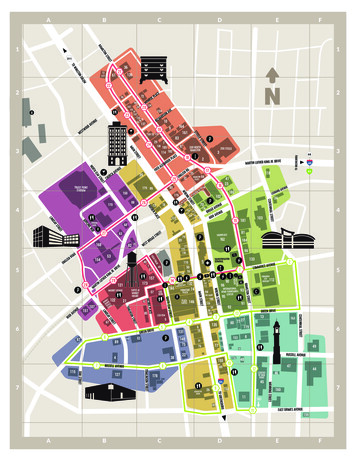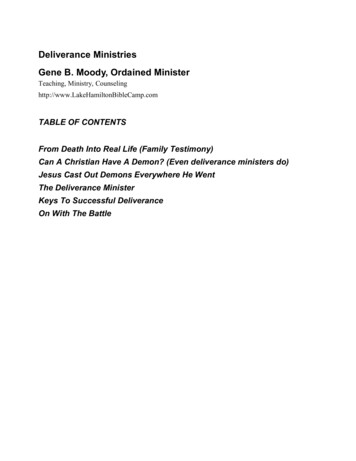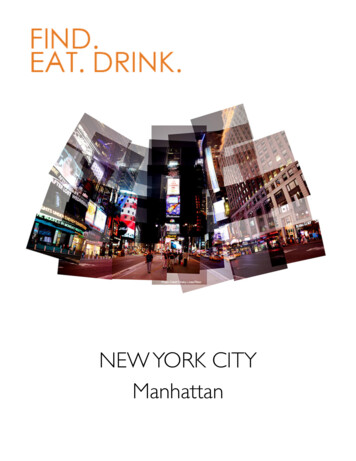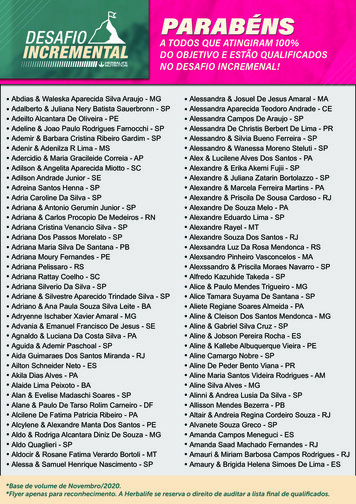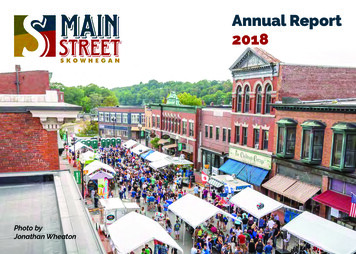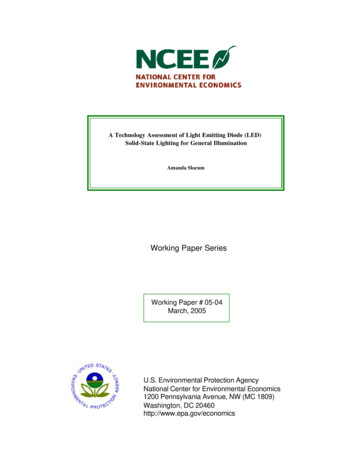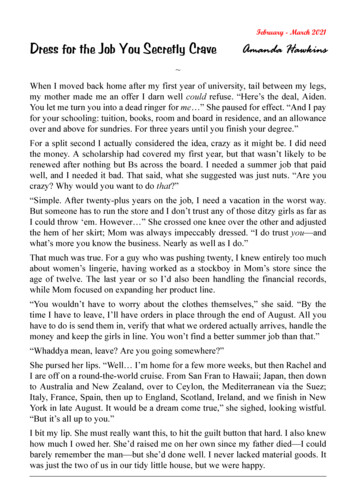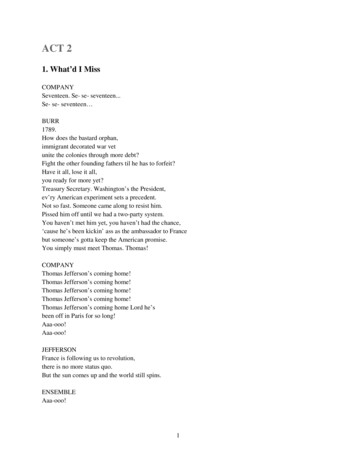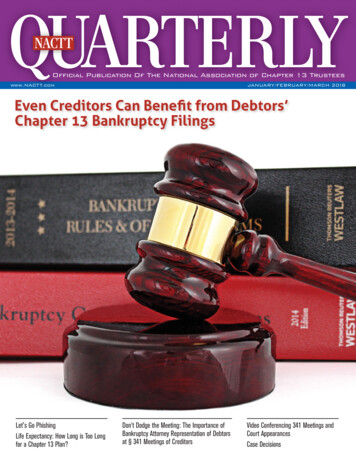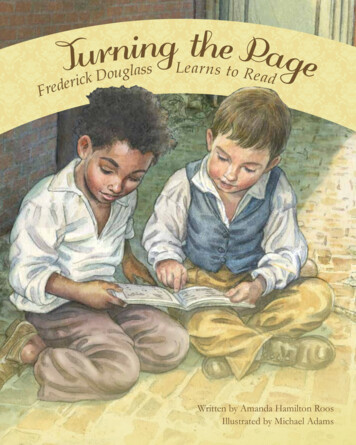
Transcription
tghneiPnrageuTlassguoDkciredFreLearns to ReadWritten by Amanda Hamilton RoosIllustrated by Michael Adams
Author’s NoteThis book is a fictional account of several episodes fromFrederick Douglass’s childhood. The story imagines whatmight have happened, based on The Narrative of the Life ofFrederick Douglass and historical facts about both Douglassand the time period in which he lived.Turning the Page: Frederick Douglass Learns to ReadEditors: Jane Hileman and Gina ClineAuthor: Amanda Hamilton RoosIllustrator: Michael AdamsBook Designer: Kristina RuppProduction Director: Robbie ByerlyProject Director: Jayson FleischerFirst Edition, January 2014ISBN: 978-1-61406-683-5, 1-61406-683-3eISBN: 978-1-61406-710-8, 1-61406-710-410 9 8 7 6 5 4 3 2 1Copyright 2014 by American Reading Company PRESSBooksARCAll rights reserved.Published in the United States by ARC Press.
Turning thePageFrederick Douglass Learns to ReadWritten by Amanda Hamilton RoosIllustrated by Michael Adams
Turning thePageFrederick Douglass Learns to Read
Frederick Douglass was born into slavery sometime inthe early 1800s. Frederick lived on a large plantationin Maryland that used the labor of enslaved AfricanAmerican people to grow tobacco and other crops.People were bought and sold like property andforced to work from sunup to sundown, with no pay.Parents and children, husbands and wives were oftenseparated, never to see each other again.Like many other enslaved children, Frederick didn’tknow his father, his birthday, or even how old hewas. Although Frederick and his mother, Harriet,were separated when he was just a baby, he alwaysremembered the way she would hold him and call himher little valentine. Harriet was also one of the fewenslaved Black women who knew how to read.When he was about seven or eight years old,Frederick’s life changed. A couple in Baltimore Citynamed Mr. and Mrs. Auld asked to borrow Frederickfrom his master. They wanted him to take care oftheir young son, Thomas.2
Baltimore was a port city with ships and people arrivingevery day from all over the world. Most of the AfricanAmerican people living in Baltimore at this time werefree. There were Black churches, Black businesses,and Black schools. Life for enslaved Black people wasoften better in the city, as well. With so many neighborswatching, many were better clothed, better fed, andbetter treated. While Frederick was sent to Baltimoreas a slave, the city would become the first stop on hisjourney to freedom.One windy afternoon, Frederick arrived in BaltimoreHarbor on a ship packed with sheep. As he climbed ontothe wharf, he could already tell that life here would bedifferent. People of every shade hurried by, well dressedand full of purpose. Carriages, wagons, carts all clatteredby, packed with goods. With the salty scent of the sea,even the air smelled different. Different might meanbetter, Frederick thought. He couldn’t imagine a lifeworse than the one he’d left behind.He set off into the city, following one of the sailorsto the Aulds’ home.4
Arriving at the Aulds’ door, Frederick saw the wholefamily waiting to meet him: Mr. Auld, Mrs. Auld, andsmall Thomas, peeking from behind his mother’s skirts.“Hello, dear,” said Mrs. Auld, with a gentle smile.Frederick could barely reply. Never had a White personspoken to him with such warmth. Could this be hisnew mistress?It was. Frederick soon learned that Mrs. Auld hadbeen born and raised in the North, where slavery wasoutlawed. To her, Frederick was a person, not property,and she treated him as she would want to be treated. Shesmiled at him, spoke kindly to him, even invited him towatch her sing.Frederick was unsure how to react to this kindness.Though grateful to be away from the brutality of theplantation, he knew that nothing had really changed. Hewatched as little Thomas ran about, gleefully ignoringhis mother’s instructions. Frederick knew he wouldnever be allowed to disobey Mrs. Auld. Life at the Aulds’might be more comfortable, but Frederick wanted morefrom life than kindness and clean clothes. Unless he didsomething, he would be a slave for life. But what couldhe, as a child, do?6
One day, Mrs. Auld handed Frederick an open book.“Frederick, do you know how to read?”“No, Ma’am.” Frederick shook his head. He didn’twant to tell her that children on the plantation didn’tlearn to read.“Well, let’s start with the A, B, Cs.”Frederick was an eager learner. He loved to trace thecrisp, black letters with his finger, committing eachone to memory. He raced through the alphabet. Mrs.Auld rejoiced in his success.8
One day, Mr. Auld discovered them reading together.“What are you doing?!” demanded Mr. Auld. “Are youteaching Frederick to read? You must stop at once.”“But, Husband.” Mrs. Auld looked shocked.“My dear, you must understand,” Mr. Auld explained. “Itis against the law to teach a slave to read. And for goodreason. It will do him no good. Learning will spoil him. Hewill become unhappy with his place. You will make himunfit to be a slave. He will start to want freedom.”Mrs. Auld wouldn’t meet Frederick’s eyes. Reluctantly, shegathered up the books and put them away.As for Frederick, Mr. Auld’s words sank deep into his heart.10
That night, Frederick couldn’t sleep.Mr. Auld’s words kept replaying in his head.As long as he could remember, Frederick hadstruggled to understand how it was that one groupof people could enslave others. He considered Mr.Auld’s words. Was Mr. Auld telling the truth? Whywould reading spoil him? And why did Mr. Auld saythat reading would make a slave unhappy in his place?Frederick was already unhappy.Outside the window, Frederick saw the moon peek outfrom behind the clouds. A shaft of brilliant light struckthe distant water of the harbor.Mr. Auld wanted to keep Frederick enslaved. Frederickwas determined to free himself. Mr. Auld had clearlysaid that a person who could read would be unfit to be aslave. Frederick knew he wasn’t meant to be a slave. Thiswas it! The pathway from slavery to freedom was clear.No matter what, he would learn to read.12
Mrs. Auld had decided something, too. The nextmorning, instead of offering to read to him afterbreakfast, she said, “Boy, run out and get the firewood.Don’t be lazy!” It was the first time Mrs. Auld had talkedto him with such coldness, and he felt something insidehim being twisted and squeezed.The days became weeks, and Mrs. Auld became moreand more intent on undoing what she had done.Whenever he moved slowly, she yelled at him. Wheneverhe touched a book, she snatched it away.It was too late. In introducing Frederick to reading, Mrs.Auld had lit a spark she could never put out. Each timeshe yelled at him, she only fanned the flames. He mighthave lost his teacher, but he was determined to find away to learn to read.14
A few weeks later, Mrs. Auld sent Frederick to thegrocery store. He was often sent on errands for theAulds, errands that took him all over Baltimore. He sawpeople young and old, Black and White, with books,newspapers, pamphlets. Everywhere he went, peoplecould read. But not Frederick.Frederick scowled as he walked. He was determined tokeep his promise to himself. He kicked the ground andwatched the pebbles scatter before him. How would helearn without a teacher?Today, his route took him down a back alley behind thegrocery store. Frederick watched a White boy about hisage playing alone. The boy’s schoolbook lay discarded onthe cobblestones beside him. Frederick noticed the boy’sfaded clothes. He got an idea.16
“Hi,” Frederick said nervously. “What are you doing?”“Nothing really. My mama says I’m not to come homeuntil dinner. She says to stay out of the way and just waitfor dinner.”Frederick remembered the bread he had in hispocket. He knew that the poor White children in hisneighborhood were often hungry. Living with thewealthy Aulds, Frederick had plenty of food.“Look here, I have some bread,” Frederick said, pulling aroll from his pocket. “You can have it if you’ll show meyour book.”“What? This book here?” The boy picked up theforgotten book. “You don’t want to see that. It’s only myschool primer.”“Just the same,” Frederick repeated, “I’d trade you somebread for it.”“Ha! You got a deal!” the boy said eagerly, handing itover. “But,” he added, “you got to return it. If I don’tbring it to school tomorrow, I’ll get beat.”18
Frederick opened the book with trembling hands.“You know how to read?” asked the little boy, through amouth full of bread.“No, I don’t.”“What? You don’t know any words?”“Not that one,” Frederick said, pointing to the first page.“Oh, well, that one is easy. Here, let me show you.”And with that, Frederick had his first new teacher.Later, as Frederick returned to the Aulds’ home, he wasfilled with hope about his new plan. He knew Mrs. Auldwould be waiting, ready to lash out at him. But beyondthe Aulds, beyond Baltimore, he could see the vast, opensea, wild and full of promise.20
AfterwordFor Frederick, this was just the beginning.He turned many of the young White boys in Baltimoreinto his teachers and learned to read and write.When he was about 20 years old, after multiple attempts,Frederick finally escaped slavery for good.As an adult, Frederick worked tirelessly for the abolitionof slavery and was a champion for the rights of bothAfrican Americans and women of all races. Not only didFrederick learn to read, he spent the rest of his life usingwords to fight for the freedom of all people. He wasone of America’s greatest speakers, writers, and thinkers,changing the world with his voice and pen.22
A special thanks to Dr. Ka'mal McClarinfor lending his expertise to this project.Dr. McClarin is the curator of theFrederick Douglass National Historic Site in Washington, D.C.Visit the Frederick Douglass National Historical Site to explore Douglass’shome, Cedar Hill, and to learn more about this amazing American.http://www.nps.gov/frdo/index.htmAbout the TextThis story is a work of historical fiction. Assuch, although much of the information istrue, some specific events described here areinventions of the author. All informationabout Baltimore City, Maryland, and theconditions of slavery are accurate. Theinformation about Frederick’s early life, hismove to Baltimore, and the methods bywhich he learned to read are based on thefacts he himself reported about his life. Inhis narrative, Douglass does not describe hisinitial inspiration for the plan to use Whiteboys as his reading teachers, nor does hedescribe any “first” encounter. This storyimagines one way this might have happened.About the IllustrationsMichael Adams did extensive research to createthe illustrations in this book. In addition tointerpreting this text, he also read the earlychapters of The Narrative of the Life of FrederickDouglass, an American Slave, written by Douglass20 years after this story takes place. ProfessorAdams looked into a variety of subjectmatter related to the era, including the troublingreality of slavery in the 1820s; agriculture inTalbot County, Maryland; and the port city ofBaltimore. The landscape, architecture, andclothing are based on references from museums,historical societies, and paintings from thatperiod. Adams included some very specificsubject matter, like the Baltimore oriole, the stateflower (black-eyed Susan), and the Pride ofBaltimore schooner.24
PRESSBooksARC1-61406-683-3978-1-61406-683-59 781614 066835
Frederick Douglass’s childhood. The story imagines what might have happened, based on The Narrative of the Life of Frederick Douglass and historical facts about both Douglass and the time period in which he lived. Turning the Page: Frederick Douglass Learns to Read Editors:
